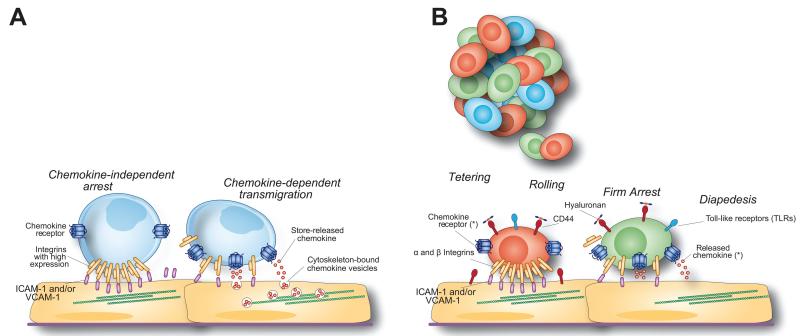FIGURE 1.
Rules for the migration of effector T cells and systemically injected stem cells to the CNS. (A) Activated effector T lymphocytes have a high expression of membrane-bound integrins that are able to support chemokine-independent arrest under flow. The transmigration of effector T cells requires chemokines that are stored in intracellular vesicles, ready to be released in close contact with crawling cells. (B) Tethering, rolling, and firm arrest of injected stem cells to activated endothelial cells and diapedesis into inflamed CNS areas are sequentially mediated by the constitutive expression of functional α and β integrins, cell adhesion molecules such as CD44, TLRs and chemokine receptors on the MSC/NPC surface. *The main chemokine signaling pathways responsible for stem cell migration are shown in Table 2.

